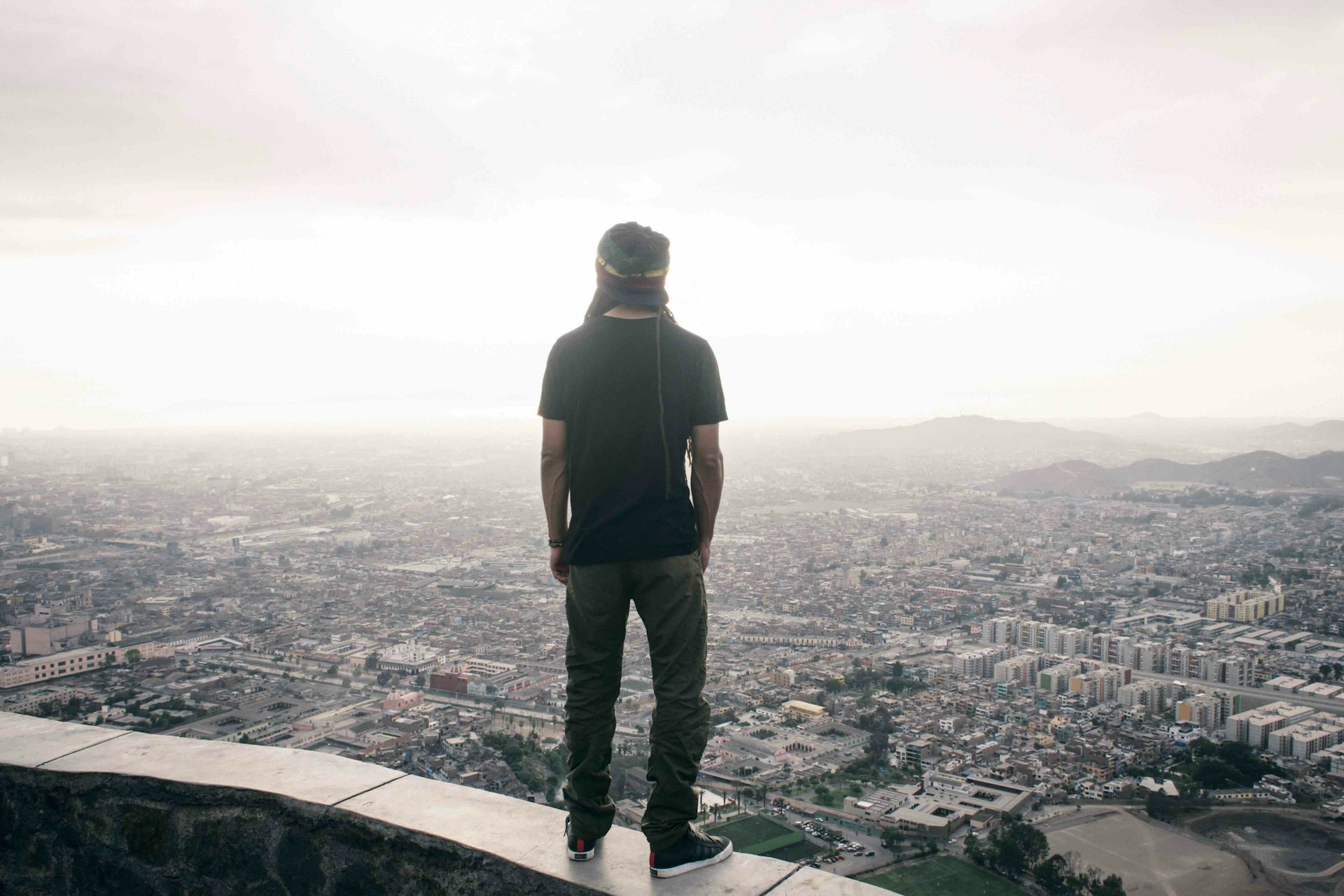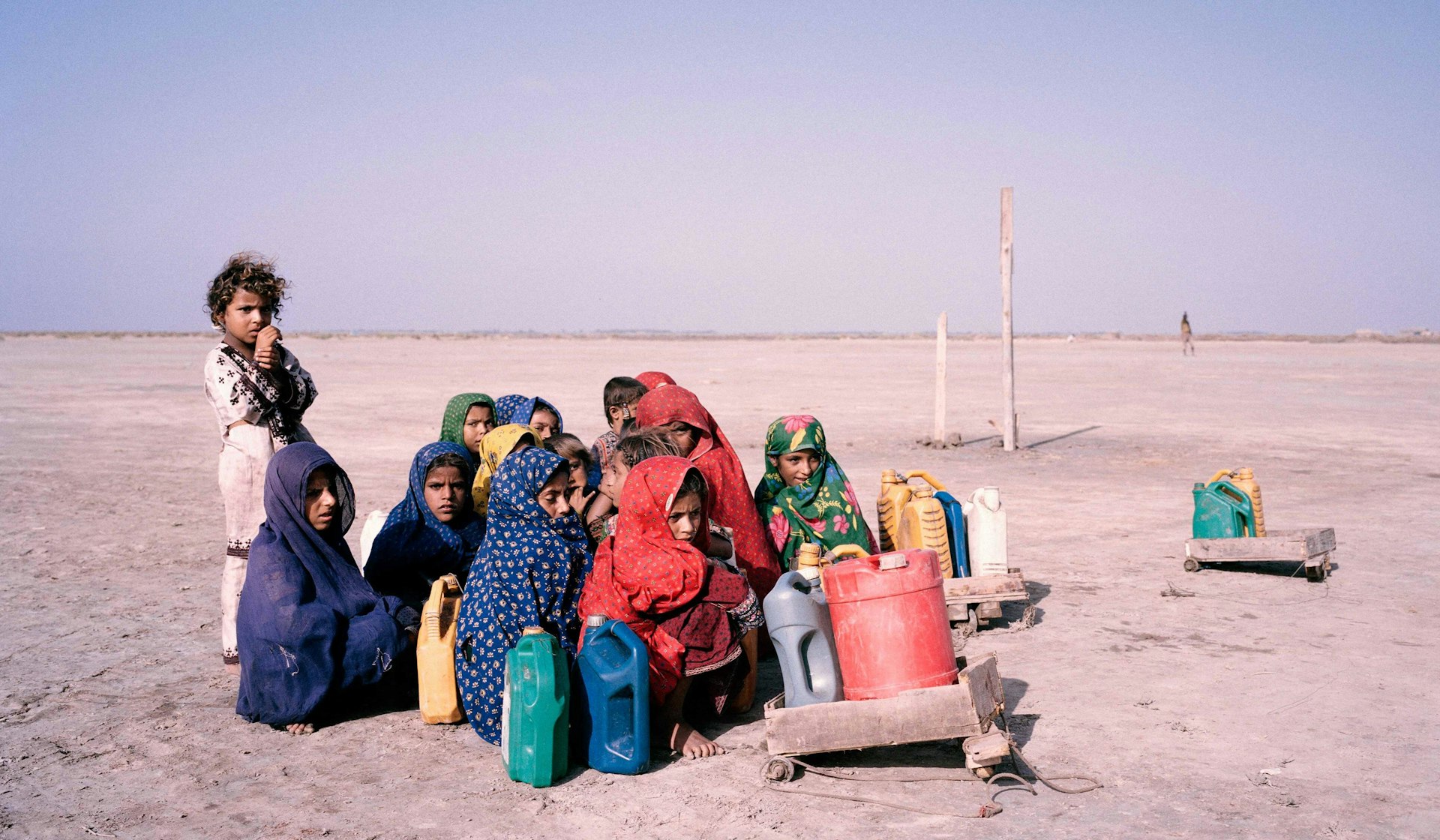
The photographer documenting the greatest silent crisis of our time
- Text by Andrea Kurland
- Photography by Mustafah Abdulaziz
There’s a chilling moment at the end of The Big Short, the Oscar-winning dark comedy about the 2008 financial crisis and the men who saw it coming, but it has nothing to do with economic collapse. At least, that’s what we think – for now.
Michael Burry, the hedge-fund manager played by Christian Bale, dismissed by his peers as an eccentric freak, has just proven himself a soothsayer after being ridiculed and ostracised by every big-wig in high-finance. Having spent years researching the mortgage market – a simmering mess of subprime loans doled out to anyone with a signature – Burry gambles that the real estate bubble is about to burst and send a shit-storm across the planet. He bets big, is deftly ignored, and the banks keep rolling out their dirty credit. When the world finally descends into financial collapse – which, as we all know, it did in royal fashion – Burry’s the only one who walks away with a win in the sum of millions of dollars. Suddenly, everyone stops laughing.
But that’s not the scary bit. The terrifying, skin-crawling, blink-and-you’ll-miss-it moment comes after the crash, before the credits roll – just as half the theatre’s getting up to leave or dusting popcorn off their laps. It’s delivered like a death punch in a single sentence:
“Michael Burry is focusing all of his trading on one commodity: Water.”
Water. Burry’s investing in a resource that covers seventy-one per cent of the planet. What a loon, you think, swigging your last dreg from a plastic bottle. That’s when the cloud of reality descends.
“Fresh, clean water cannot be taken for granted,” Burry told New York magazine in December 2015. “And it is not,” he adds. “Water is political, and litigious.”
Today, hedge-fund manager turned fortune-teller Michael Burry – a man it may be sensible to take notice of now and again – is investing in a resource that we all think of as a given. An omnipresent nothingness that pours freely from our faucets; that we wash in, wade through, and get pissed off at for ruining our picnics. Water is everywhere, all of the time. Which makes it scarily easy to ignore.
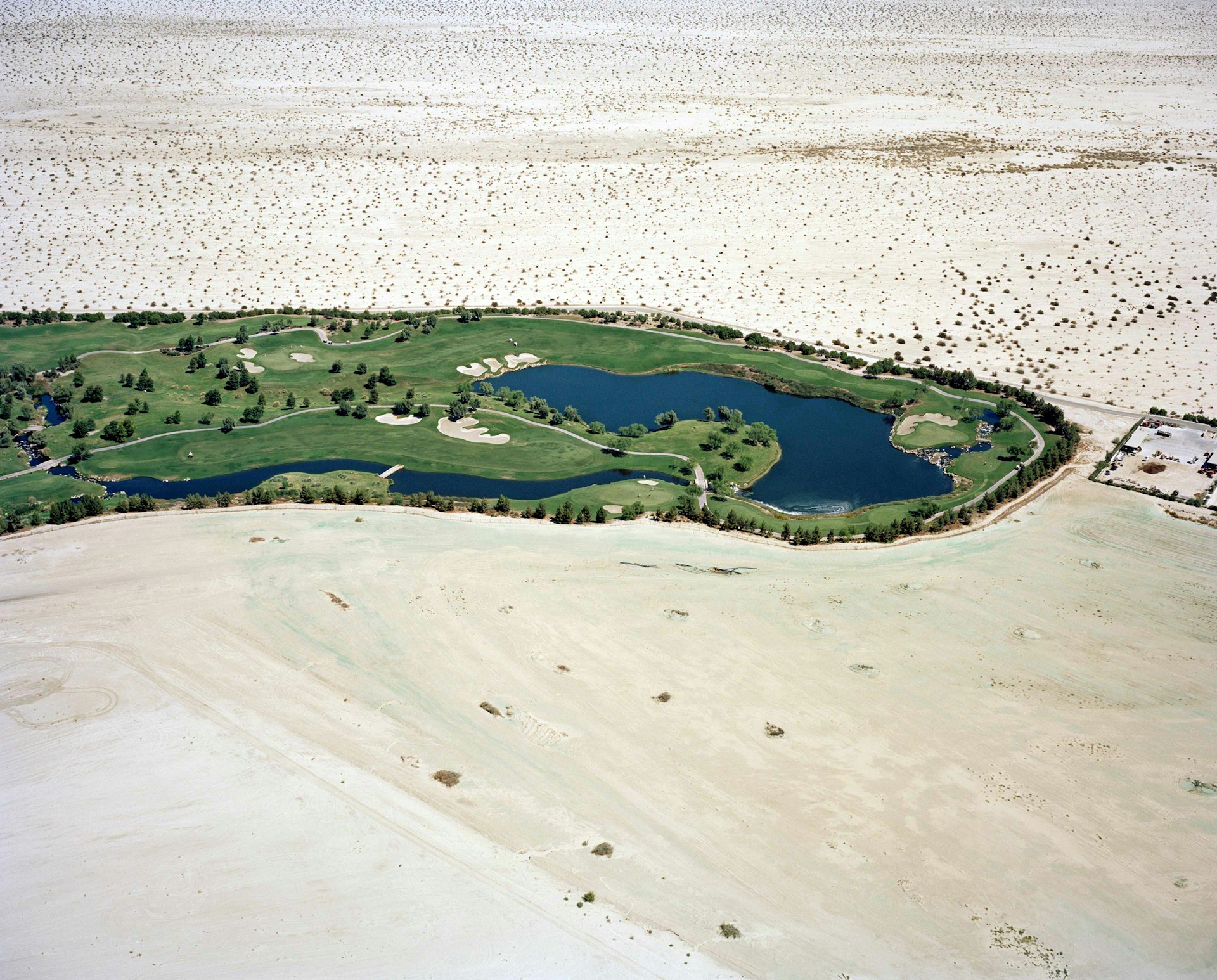
Classic Club golf course, Palm Desert, California 2015.
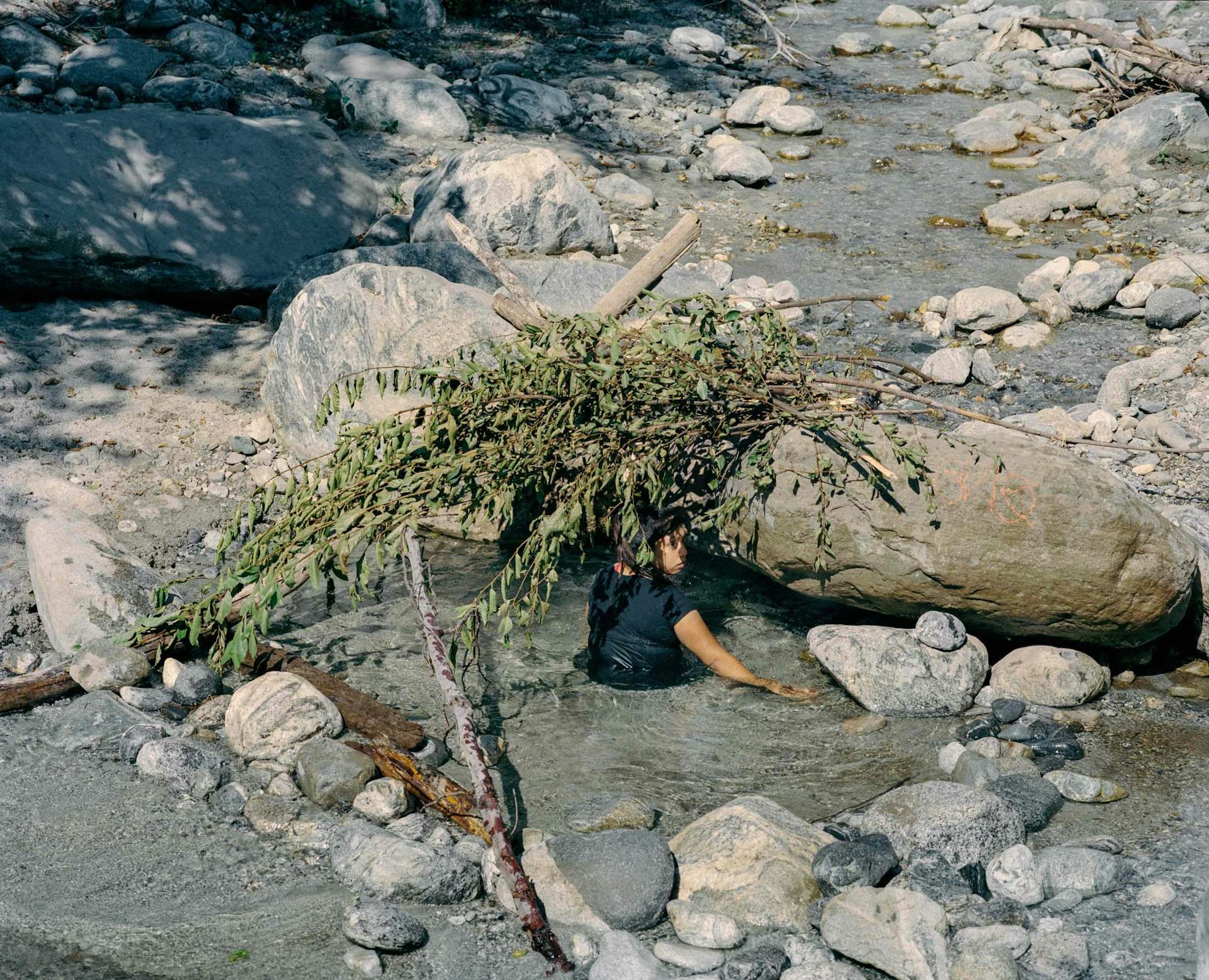
Makeshift pool, Highway 38, San Bernardino County, California.
A mid-summer’s day, August 2015. Mustafah Abdulaziz is exploring Mill Creek, a nature reserve in San Bernardino County, California. He ambles down a steep ravine off Highway 38, and spots a young Latino couple in the dry riverbed below. The girl is wading through ankle-deep water, encircling herself in a Jenga wall of rocks, while her boyfriend walks the riverbed to gather more materials. Their makeshift pool lets out more water than it holds, but before the moment seeps away it’s captured on a medium-format camera. It’s an idyllic portrait; a scene of young love. It’s also the story of a four-year drought.
“It just spoke to me,” says Abdulaziz. “Humans trying to create some level of enjoyment despite circumstances that are out of their control.”
California was the eighth stop of what Abdulaziz intends to be a fifteen-year-long journey, embarked on in 2011. He’s on a mission to document the water stories unfurling across our planet: from cholera outbreaks in Sierra Leone to deep droughts in California; from industrial development along the Yangtze River to floods in Pakistan. Between water access and sanitation, conflict and climate change, the life-giving liquid we consume without thinking plays a role in almost every crisis on Earth. And yet, it’s not always plain to see.
“We see water as something that’s incorporated into our lives, but it’s not the focus of our lives,” says Abdulaziz. “But seeing someone’s life defined by water is extraordinarily disheartening.”
By the time Abdulaziz arrived in Mill Creek, he’d witnessed water’s insidious power. In Pakistan, where more than 40,000 children die every year from diarrhoea caused by unsafe water, he met Shahbaz, a critically sick four-month-old, fifty kilometres from the nearest hospital. “The ability to drink something that is not going to kill you is a basic human need,” he says. “And if this isn’t being addressed for people in Sierra Leone, in Pakistan, in Ethiopia, we’re talking about human failure. We like to think of ourselves as so complex and so advanced and yet people are dying because they drink water scratched from a riverbed. That’s not complex to me. That’s not advanced. That’s not a world I feel proud of.”

Sand Dredger, Dongtang Lake, Hunan Province, China.
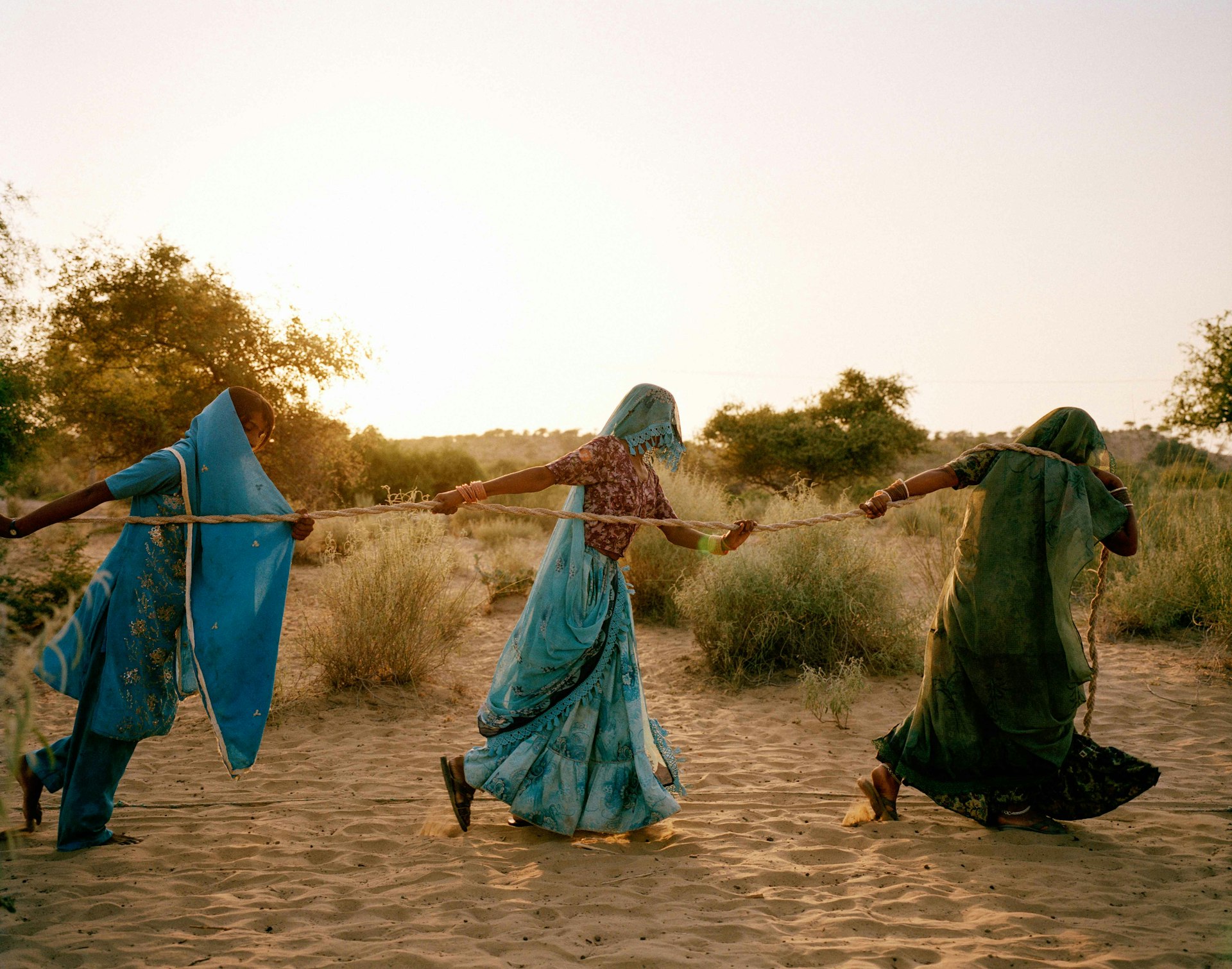
Women pull water from a well in the desert. Tharpakar, Pakistan.
More people die from unsafe water than all forms of violence, including war, said UN Secretary General Ban Ki-moon. And according to the UN, nearly 1,000 children die each day due to preventable water-related diseases like diarrhoea. It’s a frightening issue to unpick. Abdulaziz started by tackling the basics. “Access to water – the most basic reality of how we gather a resource that is fundamental to our existence,” he says. “It plays out in the home, when women are responsible for gathering water and what that prevents them from doing otherwise. It affects an entire community, when they’re pulling bad water that ultimately leads to the spread of cholera.”
As the project grew it took on a broader remit, tackling industry, climate change and exploding populations. “Now I’m seeing the reflection of how we’re kind of pushing into the future, oblivious to the negative effect we’re having on our environment – and ultimately on our own lives.”
In China, he explored the impact of sand dredging along the Yangtze River, where legal mining has cut scars deep into the Earth and disrupted the river’s ecosystem, sending the finless river porpoise to the brink of extinction – and killing off the baiji river dolphin, declared ‘functionally extinct’ in 2006. In India, he witnessed life along the Ganges, a body of water considered holy to the 500 million people it supports and one of the most heavily polluted rivers in the world. In California, he shot absurdist aerial views of plush green golf courses surrounded by barren desert. And on that sunny day in Mill Creek, after the young couple left, he witnessed water’s full brute force.
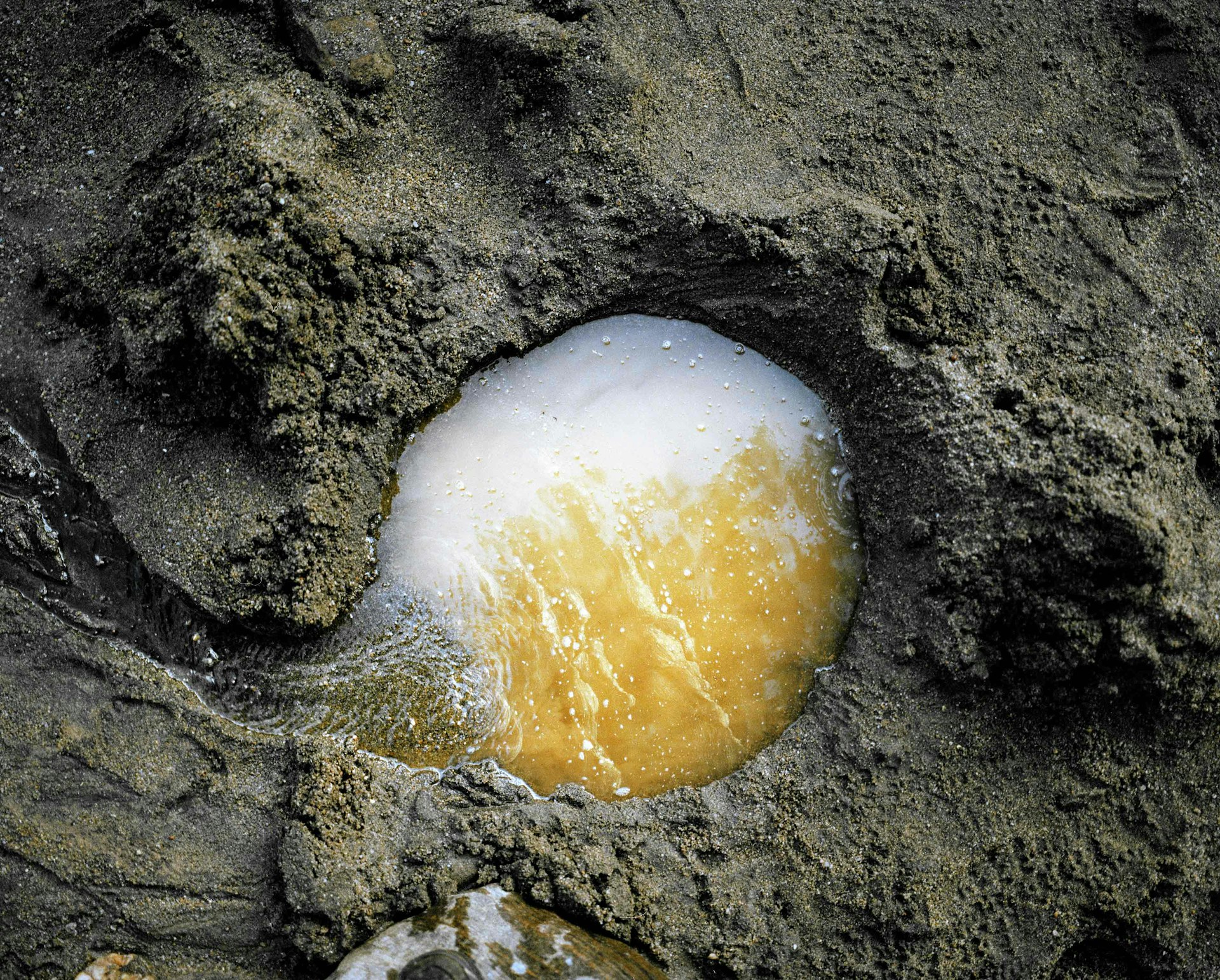
Brackish water scratched from riverbed. Konso Region, Ethiopia.
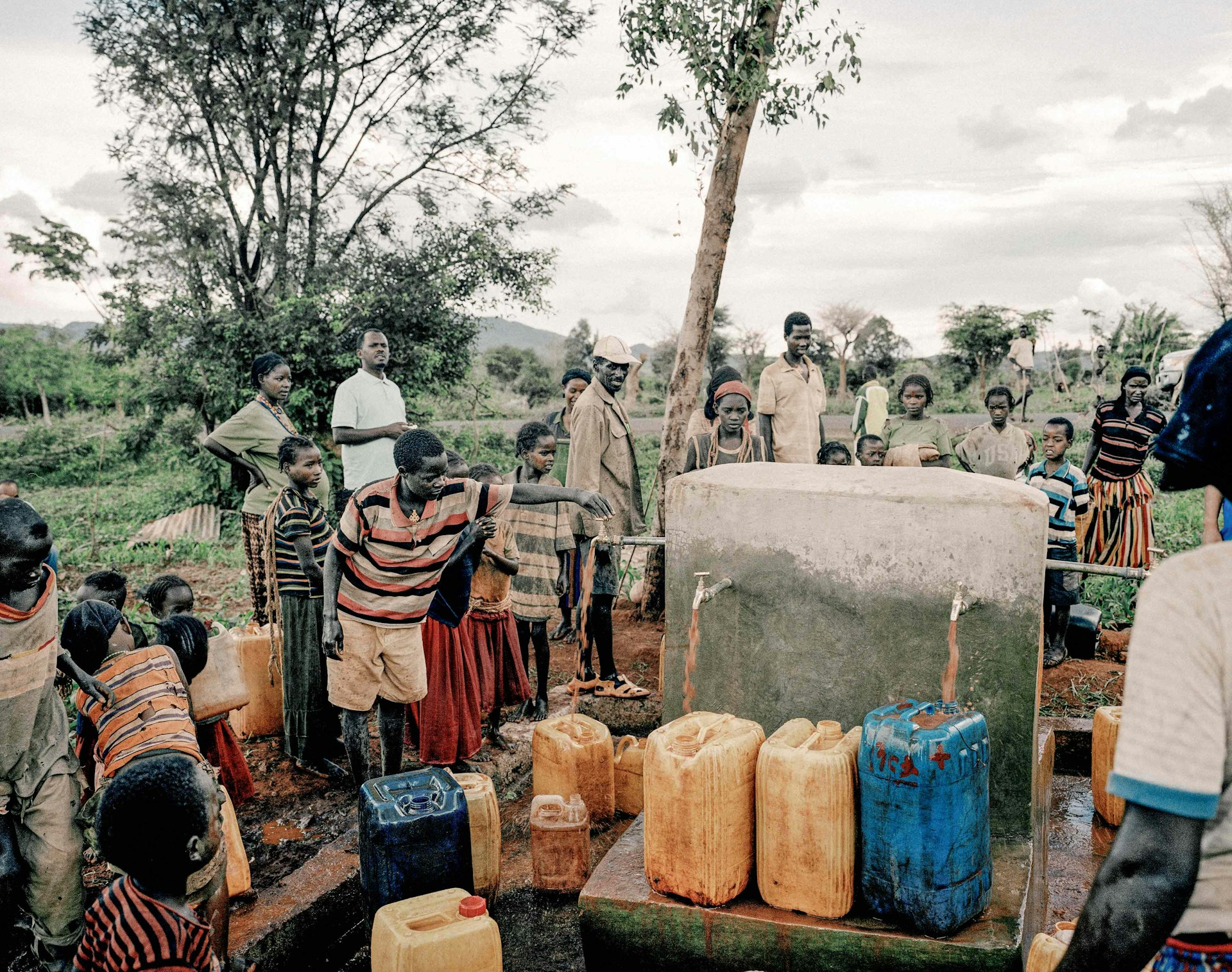
Lahyte, Ethiopia. Water from a new point spouts out brown, no better in quality than the unsafe water scratched from riverbeds.
“It was just an ordinary day with a spot of rain,” he says. “We had no idea what was happening.”
Driving back from the creek with a photojournalist friend, the pair became embroiled in a scene that triggered their reporter instincts and made them swing the car around. “There were fire engines racing past us, tailgated by a news crew.” A flash flood warning had gone out earlier that day, followed shortly by a missing person’s report.
“We got out of the car and saw firemen angling flashlights towards something in the creek,” says Abdulaziz, pulling up a photograph and apologising in advance as he does. An image of a naked body – bloody, twisted, bruised – pops onto his laptop screen, disrupting the easy ambience of our coffee shop surroundings.
“The missing person was a guy out on a first date,” he says. “They’d crossed the river not knowing about the warning, which is the worst thing you can do in a flash flood. And there we were further downstream, blissfully unaware.”
The synchronicity of those two images – two young couples, at opposite ends of a tragic spectrum – helped Abdulaziz find focus in his ambitious body of work. “Essentially, water is a force greater than ourselves,” he says. “That impressed upon me that the project will never only be about access to water or climate change – it’s about the overpowering nature of something we seek to control and exist with. Water is the common theme, but the real focus of the project is human behaviour in our world; what it fundamentally means to co-exist with our planet at this time.”

Konso Region, Ethiopia. Uchiya Nallo is eight months pregnant and spends half her day climbing up a mountain carrying 20 litres of water. “The road is very dangerous and I feel tired all the time,” she says.
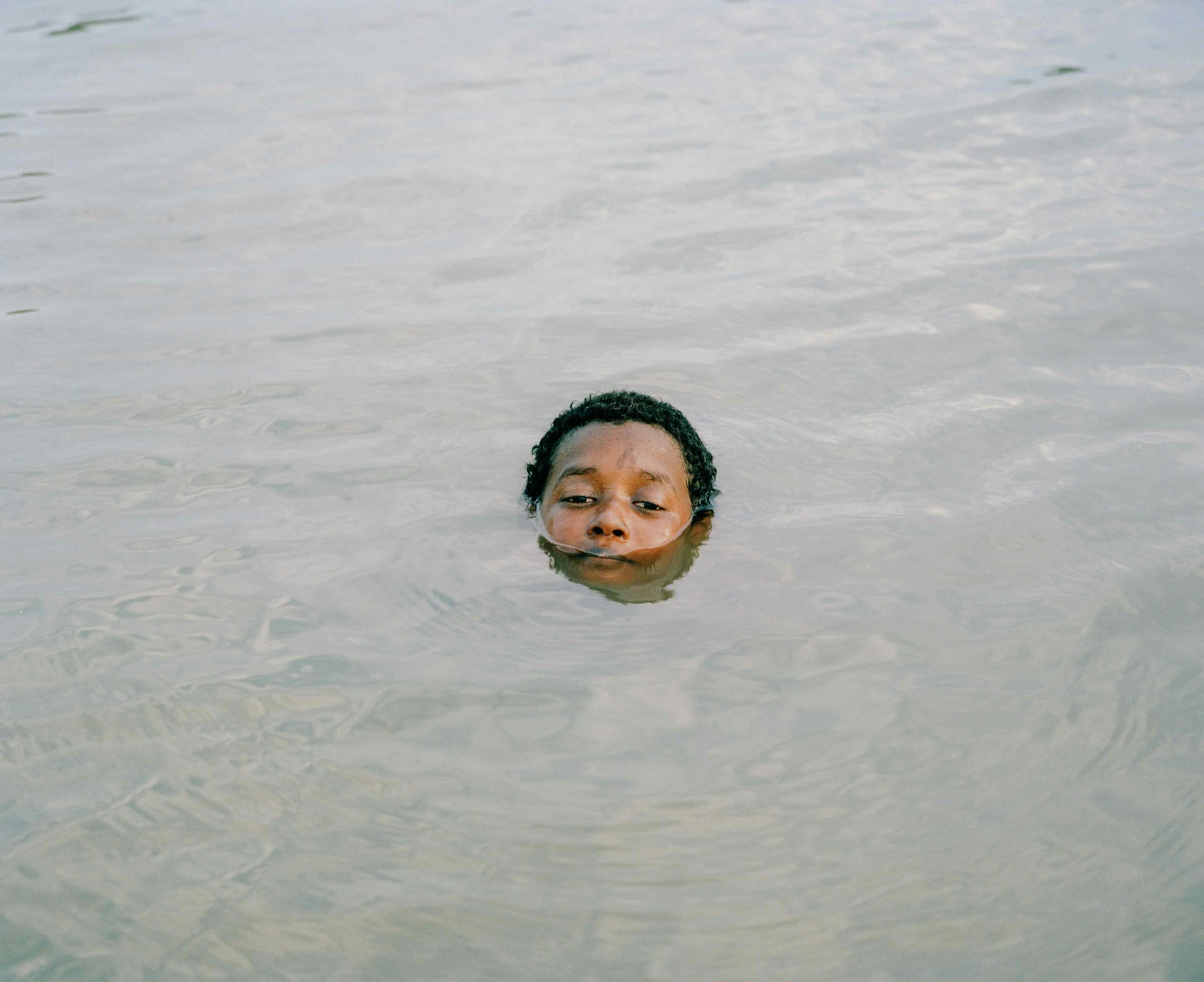
Paraguay River. Mato Grosso, Brazil. The river is central to life in Caceres, and Claudio and his family visit regularly to swim and play. But a few miles away, the main sewage pipe pumps directly into the water, depleting fish stocks and impacting livelihoods of local fishermen.
It’s easy to take something for granted when you’ve never envisioned a world without it. The more Abdulaziz researched into water, the darker the future looked. But he still couldn’t visualise what was going on.
“There’s a disconnect between how these issues are debated in academic forums and how we perceive them, as ordinary people,” he says. “It doesn’t interact with us on a fundamental level.”
One thing that helped him fill in the gap was the work of Professor Peter Gleick. As founder of the Pacific Institute, a US-based research centre, Gleick writes about water issues in an engaging, impassioned manner. “Those of us who are lucky enough to live in countries with high-quality tap water take it for granted,” writes Gleick. “Go to your tap, draw a glass of water, and drink it. Then remember that nearly a billion people still do not have reliable access to safe, affordable tap water and cannot do what you’ve just done.”
In 2010, Gleick coined the term ‘peak water’ – a theory that water scarcity will create a situation similar to ‘peak oil’, whereby demand will in effect outstrip supply. But supply, in the case of water, is less a question of quantity and more an issue of obstacles – power, politics, inequality, mismanagement – that we often wilfully let get in the way. In fact, according to Gleick, we may have already depleted our most accessible freshwater sources. “To be clear, ‘peak water’ doesn’t mean the US or the world is running out of water,” he clarified in a Forbes article. “Overall, there is plenty of water on the planet and it is (mostly) a renewable resource. But there are serious physical, environmental, and economical constraints on water availability that make regional water problems increasingly urgent.”
The issues Gleick talks of in academic lingo spring to life in the moments Abdulaziz captured. Economic constraints is Uchiya Nallo, eight months pregnant, walking barefoot down a cliff in Ethiopia to collect a bucket of unsanitised water. It’s the urban claustrophobia of overpopulated Shanghai, in a country where sixty per cent of underground water is not fit for human contact. It’s there, too, in the subtext of a young boy coming up for air in the murky waters of the Paraguay River, where sewage run-off and depleted fish stocks are pushing Brazil’s fishermen to the brink. And it’s there in the stark image of a group of young girls huddling on a sandy plain in southern Sindh, Pakistan, where ferocious floods in 2010-11 caused by gradual shifts in climate have left the country devastated and the land barren.
“It’s important to ask how water actually affects someone in its most scarce form,” says Abdulaziz. “But it’s not about reporting and it’s not intended as a lecture. It’s about perspective; how we view our environment. What we do to it, how we scar it, how we behave during a drought, and the immediate effect of this perpetual behaviour, like when Hurricane Sandy hits New York.”
These universal stories, and the complex web they weave, are nothing to be sniffed at. According to the WWF, who supported Abdulaziz’s work, two-thirds of the global population may face water shortages by 2025 – the same year Abdulaziz hopes to conclude his magnum opus. But this message is nothing new. In her 2007 book Blue Covenant, Maude Barlow laid things bare. “The three water crises – dwindling freshwater supplies, inequitable access to water and the corporate control of water – pose the greatest threat to the planet and to our survival. Together with impending climate change from fossil fuel emissions, the water crises impose some life-and-death decisions on us all.”
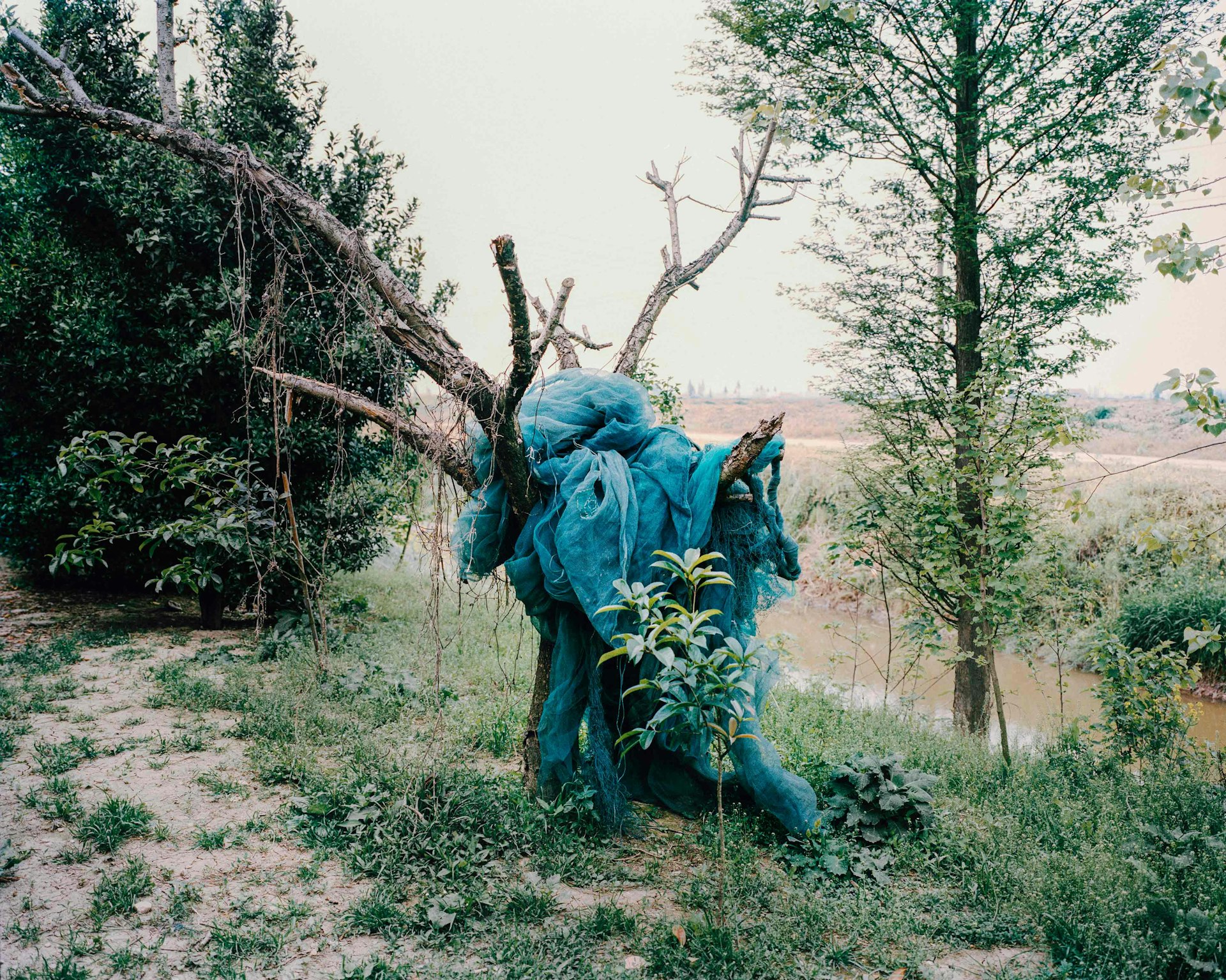
Fish nets, Hongxianxi, Hubei Province, China. China is responsible for 68% of global fish production.
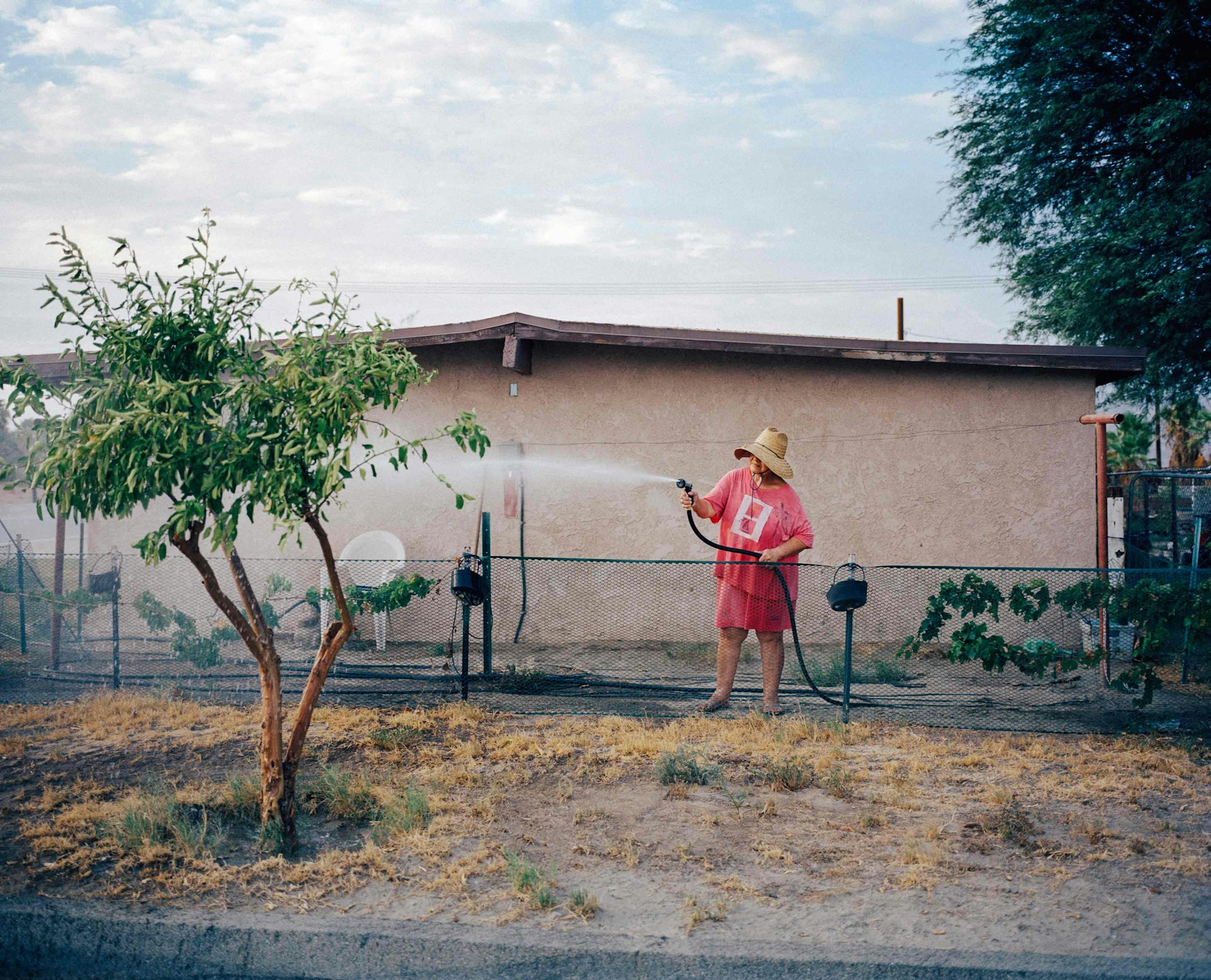
Indio, California, 2015. Despite drought restrictions, a woman hoses down a plant on the sidewalk.
She also made an accessible case for why it’s never too late to act. “Unless we collectively change our behaviour, we are heading toward a world of deepening conflict and potential wars over the dwindling supplies of freshwater – between nations, between rich and poor, between the public and the private interest, between rural and urban populations, and between the competing needs of the natural world and industrialised humans.”
Barlow paints a frightening picture. But nearly ten years on, have we taken heed?
In Patna, India, Abdulaziz met a man in an Angry Birds T-shirt who offered to row him down the Ganges. As they glided over the brown water, the man spoke at length with heartfelt frustration about his life on the river; how the bridges are mismanaged, how people take it all for granted, how he wishes the river received the respect it deserves. As he spoke, he nibbled at something in a wrapper, which he promptly threw into the water when he was done.
“He’s ranting and is clearly passionate – he has a pretty critical thought process going on,” says Abdulaziz. “And yet he’s totally unaware of his own behaviour.”
Abdulaziz was struck not because his tour guide stood out, but because his actions were all too familiar. “The sand dredges in China is the same thing, just on a larger scale. It’s the woman in California watering her plants during a drought. But it gets scaled up, and then people are surprised when Hurricane Sandy destroyed so much. So that wrapper is our willingness to believe that we are somehow not affected by our environment.”
But for every damning portrait there is a sign of hope. In a village in Benué, Nigeria, Abdulaziz saw participatory democracy coalescing around a water pump built by WaterAid. “The community created a council to monitor use.” According to the UN, 2.6 billion people have gained access to improved drinking water since 1990, but 663 million people are still without, laying bare the deep roots of inequality and power.

Triveni Sangam, Allahabad, India. Girls from the K. Ghandi School in Farrukhabad at the confluence of the Ganges and Yamuna rivers. Allahabad, a holy city, was the site of the Kumbh Mela pilgirmage that saw over 30 million people gather to bathe and pray, leaving the land replete with trash.
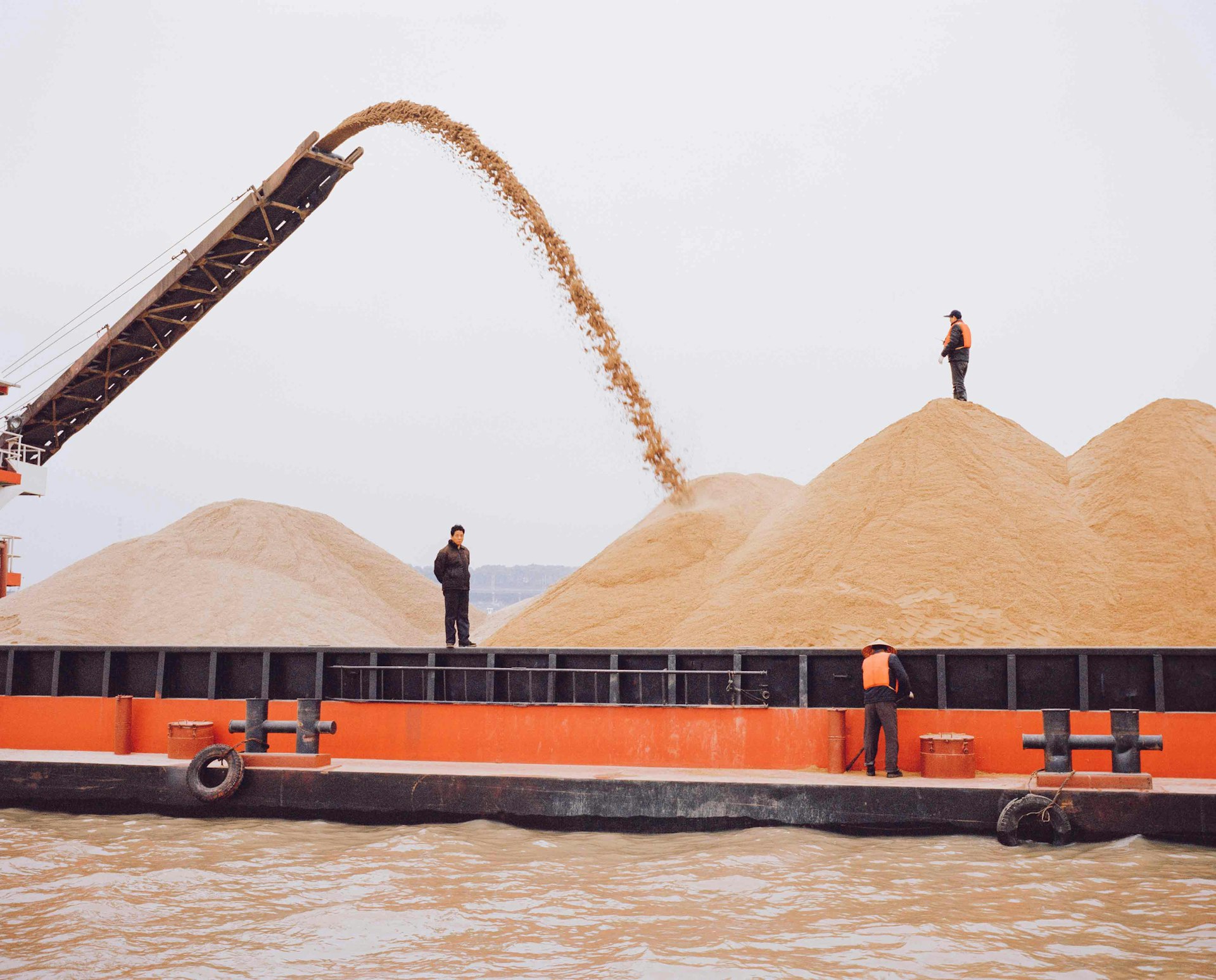
Sand ships, Dongting Lake, China.
It’s this constant dialogue – between cause and effect, problem and solution – that needs to be documented and debated if we’re to trigger any kind of progress. That’s what Abdulaziz hopes to do, camera in hand, for the next decade if not more. “What I want people to take away from this is not that they need to care about water, or that bad things are happening, but that they feel a part of this world.”
That day on the Ganges, Abdulaziz saw the chasm between the environment we want to live in and the lives we choose to lead – and our wilfulness to be oblivious when those two things are at odds. The Angry Birds man was not the product of a place; rather, he held up a mirror to us all.
“We’re willing to convince ourselves of any truth that lets us perpetuate a behaviour that makes us comfortable,” says Abdulaziz. “Human beings are able to endure and witness an extraordinary amount of hardship and yet not see the connections between what they do and what they could do to prevent that. They see the gap, and explain it in a number of ways. ‘Oh, there’s nothing I can do.’ But Cholera doesn’t just happen; cholera can be solved. And I think humans prevent themselves from feeling that pain by disassociating themselves from the causes and responsibilities – through denial, through ignorance, through willingly not caring.”
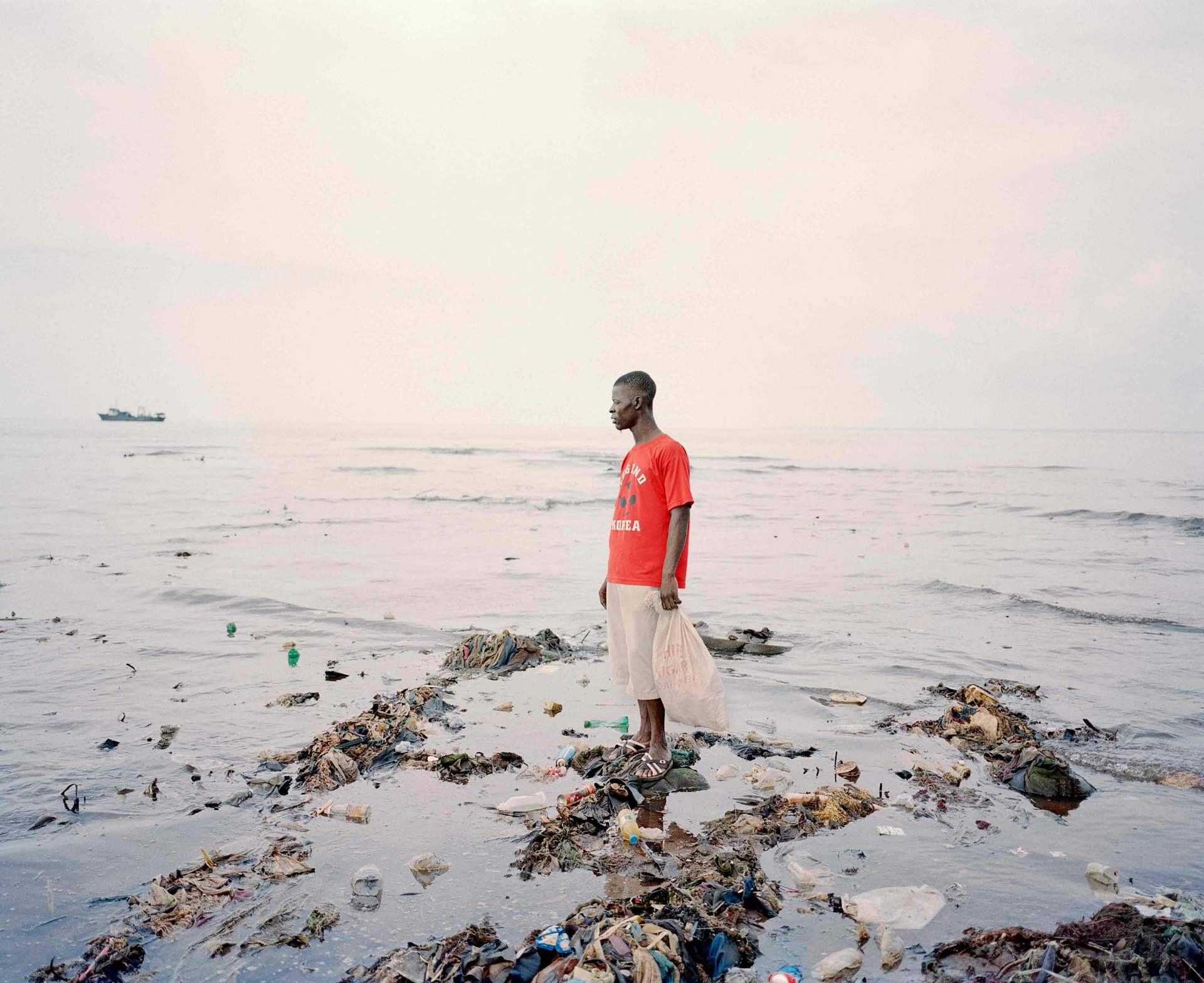
Freetown, Sierra Leone, 2012. Momoh collects plastic bottles from the polluted beach of Kroo Bay, a poor slum settlement of 5,500 people where the cholera outbreak of 2012 struck hardest.
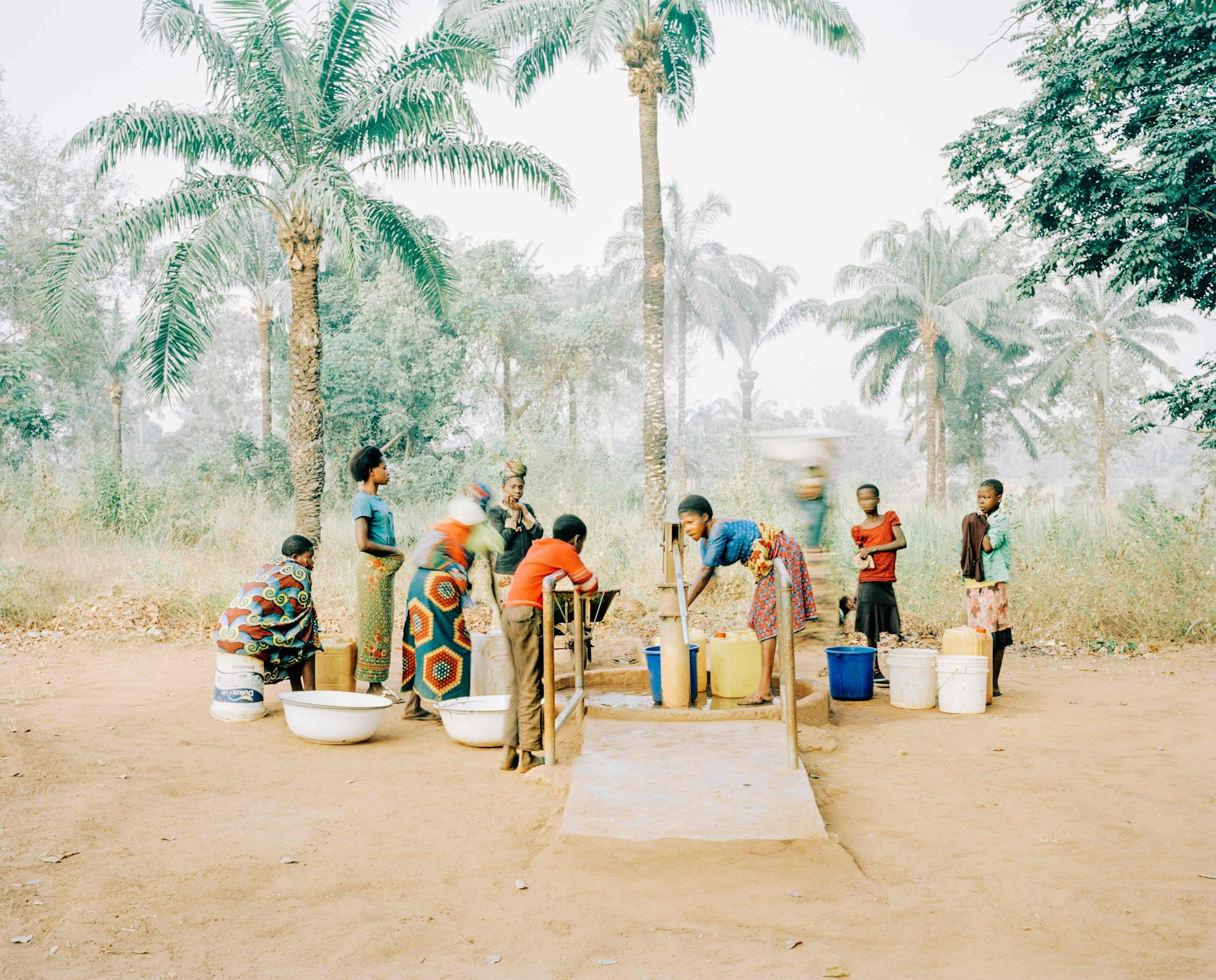
The water pump in Osukputu, Benue, Nigeria. Women and children gather at the hand pump, which serves a community of 800 with clean safe water.
At a time when the World Economic Forum ranks water crises as the top global risk to industry and society, maybe the people we should be listening to are already doing the work; burying their noses in reports, reading academic journals and talking to real people about the very real issues in their lives. Maybe the evidence we need to predict our own future is right here in front of us, if we’re willing to look. And as uncomfortable or annoying as it may seem, maybe the only way to stave off darker days is to act now, before the credits roll.
“The people that will be most affected by a water crisis on a global scale – by future conflicts over water resources, flooding and evacuation of cities in 2025 – are people who, because of their ineptitude and lack of desire to address the issues in front of them, are living in the West. People in Nigeria have survived at the extremities of this crisis. People in Upper West Side Manhattan have not. They need to realise they are connected to their world. Water is just a very fundamental resource for that understanding.”
This article appeared in Huck 55 – The Freaked Out Issue. Buy it in the Huck Shop now or subscribe to make sure you never miss another issue.
Enjoyed this article? Like Huck on Facebook or follow us on Twitter.
